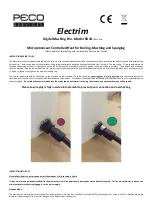
S7-400H
System Manual, 03/2012, A5E00267695-11
141
Link-up and update
12
12.1
Effects of link-up and updating
Link-up and updating are indicated by the REDF LEDs on the two CPUs. During link-up, the
LEDs flash at a frequency of 0.5 Hz, and when updating at a frequency of 2 Hz.
Link-up and update have various effects on user program execution and on communication
functions.
Table 12- 1 Properties of link-up and update functions
Process
Link-up
Update
Execution of the user
program
All priority classes (OBs) are
processed.
Processing of the priority classes is
delayed section by section. All
requests are caught up with after the
update.
For details, refer to the sections
below.
Deleting, loading,
generating, and
compressing of blocks
Blocks cannot be deleted,
loaded, created or
compressed.
When such actions are busy,
link-up and update operations
are inhibited.
Blocks cannot be deleted, loaded,
created or compressed.
Execution of communication
functions, PG operation
Communication functions are
executed.
Execution of the functions is
restricted section by section and
delayed. All the delayed functions are
caught up with after the update.
For details, refer to the sections
below.
CPU self-test
Not performed
Not performed
Test and commissioning
functions, such as "Monitor
and modify variable",
"Monitor (On/Off)"
Test and commissioning
functions are disabled.
When such actions are busy,
link-up and update operations
are inhibited.
Test and commissioning functions
are disabled.
Handling of the connections
on the master CPU
All connections are retained;
no new connections can be
made.
All connections are retained; no new
connections can be made.
Interrupted connections are not
restored until the update is completed
Handling of the connections
on the reserve CPU
All the connections are
cancelled; no new connections
can be made.
All connections are already down.
They were cancelled during link-up.
















































